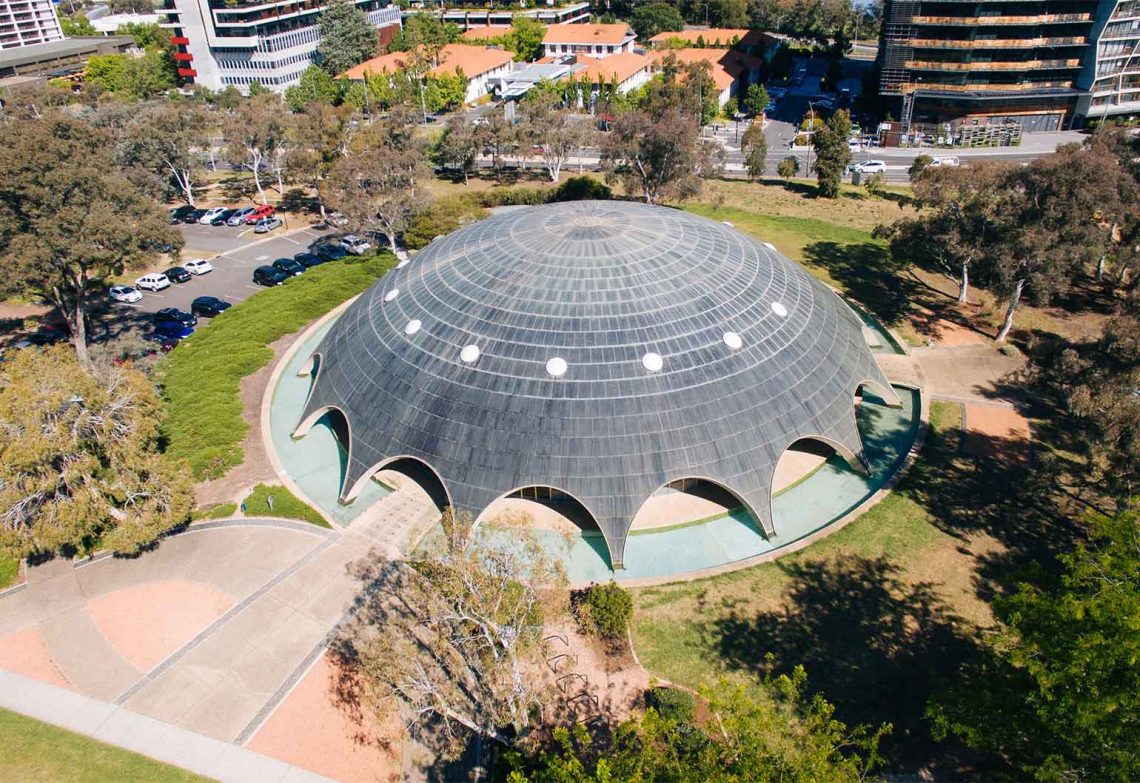The University of Canberra has partnered with the Australian Academy of Science, GML Heritage and GHD to develop an innovative sustainability plan for a heritage-listed landmark.
An ACT icon since its construction in 1959, the Australian Academy of Science’s Shine Dome was created to reflect the inquiring and innovative nature of science. With its unique copper-sheathed concrete dome, it has won numerous awards and is one of seven projects the Australian Institute of Architects has nominated to the World Register of Significant Twentieth Century Architecture.
In 2005, it was the first building in the capital to be added to the National Heritage List for its historical and architectural significance.
But with the landmark now more than 60 years old, a plan was needed to ensure the conservation and sustainable management of the Shine Dome.
A 21st century dome
Engineers Australia member and Chartered engineer Ari Hammerschlag MIEAust CPEng leads the Sustainability Team in Built Environment at GHD in Victoria. He has worked on major urban development projects in Australia and overseas, including Victoria Harbour in Melbourne and Battersea Power Station in the United Kingdom.

One of his latest projects is the Shine Dome, with GHD involved in assessing the building’s internal and external fabric, building systems, operational profiles and forecast future uses to determine how best to replace old equipment and apply new technology without changing the design.
“The Shine Dome is intended as a beacon of sustainability, and a demonstration of what a sustainable future is,” Hammerschlag told create ahead of his appearance at Engineers Australia’s Climate Smart Engineering conference in November.
“What we’ve shown as part of this study is that implementing sustainability is possible and practical, and can be done almost anywhere — even on a heritage building.”
Hammerschlag and his team were initially tasked with undertaking an energy performance review of the building to understand the baseline of how it is currently performing, looking at the mechanical services and the building fabric.
“Then we undertook modelling to determine if we implemented certain different design moves, such as changing mechanical services, changing building fabric, changing lighting and other initiatives, how that would impact the energy efficiency of the building,” he said.
“Finally, we undertook a multi-criteria analysis of all the different initiatives that were tested, as well as other sustainable initiatives, to create a sustainable action plan of what we would recommend implementing at the site.”
Challenges of change
Hammerschlag said there was always an underlying concern about the sustainability measures the could be implemented in a heritage building.
While the project team found they were quite constrained by the heritage status in terms of what they could actually change, their modelling returned interesting results when it came to improving energy performance.
“The final multi-area criteria analysis that we did looked at all the different options and weighted them against criteria like heritage, energy efficiency, cost,” he said.
“It was clear that a lot of the effective initiatives didn’t actually involve impacting the building fabric. There are a lot of other ways that you could improve building performance from a sustainability perspective, without actually touching the building structure itself.”
Funding for the research project was provided by the Australian Government through the 2019/20 National Heritage Grants scheme.
To hear more from Ari Hammerschlag, including the results of the modelling and the initiatives the team undertook, don’t miss his presentation at the Climate Smart Engineering conference.



